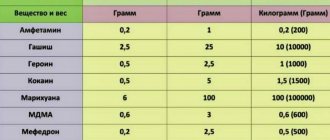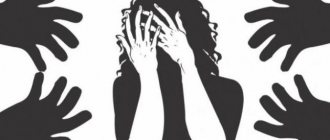What is the penalty for growing narcotic plants?
Lawyer Antonov A.P.
The law defines illegal cultivation as any cultivation of drug-containing plants. According to Article 1 of the Federal Law “On Narcotic Drugs and Psychotropic Substances” (hereinafter referred to as Federal Law No. 3), cultivation is: “activities related to the creation of special conditions for sowing and growing narcotic plants, as well as their sowing and growing, improving cultivation technology, breeding new varieties, increasing productivity and resistance to adverse weather conditions.” That is, how cultivation qualifies both the breeding of new varieties, and equally sowing and growing.
A separate story with the seeds of the same hemp. If their sowing is already a completed crime, even if nothing has sprouted, then the acquisition of seeds in itself is not a crime. If the seeds were purchased for the purpose of illegal cultivation and their quantity is intended for the cultivation of more than 330 copies (especially large size for hemp), this may qualify as preparation for cultivation on an especially large scale, that is, under Part 2 of Article 231 (serious crime, up to 8 years of imprisonment). In smaller quantities, the purchase of seeds is not punishable either under the Criminal Code or the Code of Administrative Offenses. There is no liability for preparation for a crime of minor gravity and for preparation for an administrative offense either under the Criminal Code (Article 30) or under the Code of Administrative Offences.
Sowing hemp on a large scale for illegal purposes, as well as any other drug-containing plant, is a complete crime, as can be seen from the definition of cultivation in Federal Law No. 3. Similarly, sowing even one copy of such plants, that is, in a size less than large, is punishable under Article 10.5.1 of the Code of Administrative Offenses (fine or administrative arrest for up to 15 days).
The list of narcotic plants was approved by Decree of the Government of the Russian Federation of November 27, 2010 No. 934. The same decree defines “plant sizes” (size here refers to the number of specimens, not length or width). For more information on determining plant sizes, see the “Dimensions” chapter above. Here we will only say that we must carefully ensure that plants found growing do not end up being cut off as a result of a search or inspection, and in the case of seizure of psilocybin mushrooms, that all fruiting bodies are correctly counted, since the mushrooms continue to grow even under arrest. Therefore, when removing myceliums, their exact number should be indicated in the protocol. Although according to science mushrooms are not plants, legally mushrooms are plants.
Sincerely, lawyer Anatoly Antonov, managing partner of the law firm Antonov and Partners.
Still have questions for your lawyer?
Ask them right now here, or call us by phone in Moscow +7 (499) 288-34-32 or in Samara +7 (846) 212-99-71 (24 hours a day), or come to our office for a consultation (by pre-registration)!
The current legislation of the Russian Federation provides for punishment not only for the acquisition, storage, transportation, shipment, and sale of narcotic drugs, but also for the illegal cultivation (cultivation) of drug-containing plants.
In accordance with Article 1 of the Federal Law of January 8, 1998 No. 3-FZ “On Narcotic Drugs and Psychotropic Substances,” the illegal cultivation of narcotic plants is an activity related to the creation of special conditions for sowing and growing narcotic plants, as well as their sowing and growing, improving cultivation technology, breeding new varieties, increasing productivity and resistance to adverse weather conditions, carried out in violation of the legislation of the Russian Federation.
The legislation of the Russian Federation provides for administrative and criminal liability for the illegal cultivation of drug-containing plants.
Article 10.5 of the Code of the Russian Federation on Administrative Offenses (hereinafter referred to as the Code of Administrative Offenses of the Russian Federation) provides for liability for failure by a farmer or land user to take measures to destroy wild plants containing narcotic drugs or psychotropic substances or their precursors. Such actions are punishable by the imposition of an administrative fine on citizens - in the amount of one thousand five hundred to two thousand rubles; for officials - from 3 thousand to 4 thousand rubles; for legal entities - from 30 thousand to 40 thousand rubles.
Article 10.5.1 of the Code of the Russian Federation on Administrative Offenses provides for liability for the illegal cultivation of narcotic plants. Such actions are punishable by the imposition of an administrative fine on citizens in the amount of one thousand five hundred to four thousand rubles or administrative arrest for up to 15 days; for legal entities - from 100 thousand to 300 thousand rubles.
Identification and suppression of administrative offenses related to illicit trafficking and non-medical use of narcotic drugs is of great importance in preventing crime in this area (crimes of double prevention). The application of enforcement measures to persons who have committed administrative offenses is aimed, first of all, at preventing crimes, which often turns out to be effective. Thus, on the one hand, the principle of the inevitability of punishment even for committing an offense is implemented, on the other hand, a preventive effect is exerted on the person at the early stage of the formation of criminal intent, which has a psychological preventive effect.
If illegal actions contain signs of a crime, then liability arises under Article 231 of the Criminal Code of the Russian Federation. At the same time, at present, criminal liability arises only if illegal cultivation is carried out on a large or especially large scale.
In accordance with Article 18 of the Federal Law of 01/08/1998 No. 3-FZ “On Narcotic Drugs and Psychotropic Substances”, the cultivation of narcotic plants is prohibited on the territory of the Russian Federation, except for the cultivation of such plants for use in scientific, educational purposes and in expert activities and varieties of narcotic plants permitted for cultivation for industrial purposes. This means that even hilling, loosening, removing weeds and watering the soil around drug-containing plants forms signs of cultivation.
Decree of the Government of the Russian Federation dated November 27, 2010 No. 934 approved a list of plants containing narcotic drugs or psychotropic substances or their precursors and subject to control in the Russian Federation, as well as large and especially large sizes of cultivation of these plants for the purposes of Article 231 of the Criminal Code of the Russian Federation ( hereinafter referred to as the Criminal Code of the Russian Federation). For example, plants containing narcotic drugs include: hemp, poppy, blue lotus, mushrooms of any kind containing psilocybin and (or) psilocin, coca bush, sage and others.
These acts are punishable by a fine in the amount of up to 300 thousand rubles or in the amount of the wages or other income of the convicted person for a period of up to two years, or by compulsory labor for a period of up to 480 hours, or by restriction of liberty for a term of up to 2 years, or by imprisonment for that same deadline.
The same acts committed by a group of persons by prior conspiracy or by an organized group, or on an especially large scale, are punishable by imprisonment for up to 8 years.
The legislation of the Russian Federation not only prohibits the cultivation of narcotic plants, but also obliges land owners to destroy narcotic plants growing or illegally cultivated on used plots and owned plots.
Deputy Prosecutor of the Tabunsky District D.A. Veselov
What is the punishment in Russia for growing marijuana?
If a person has grown less than 20 cannabis bushes, as already noted, he will be brought to administrative responsibility under Article 10.5.1 of the Code of Administrative Offenses of the Russian Federation. For this offense, a fine of 1,500 to 4,000 rubles or administrative arrest for up to 15 days is imposed.
If an offender grows 20 or more cannabis bushes, he will be prosecuted under Article 231 of the Criminal Code of the Russian Federation. In accordance with it, for illegal cultivation of hemp on a large scale (20 or more hemp bushes), the convicted person is sentenced to one of the following punishments:
- imprisonment for up to 2 years;
- restriction of freedom for up to 2 years;
- compulsory work for up to 4801 hours;
- a fine of up to 300,000 rubles or in the amount of the offender’s income for a period of up to 2 years.
Even more severe punishment is provided for growing hemp on a particularly large scale (330 or more bushes). For this act, the court can sentence the offender to imprisonment for up to 8 years. In addition to this punishment, a decision may be made to restrict freedom for up to 2 years. The same liability is provided for the cultivation of cannabis in any amount by a group of persons by prior conspiracy or by an organized group.
Imprisonment is the forced isolation of a criminal from society. Thus, the convicted person must serve his sentence in specialized institutions.
Restriction of freedom does not imply isolation of the convicted person from society. Instead, the court imposes a number of prohibitions and restrictions on the person. Mandatory measures include a ban on changing your place of permanent residence and traveling outside the municipal district without permission from a government agency. At the discretion of the court, a ban may be imposed on the premises of places of mass events or a mandatory requirement to be at home at a certain time of day, etc. A convict sentenced to restriction of freedom is obliged to come to the institution that supervises the imprisonment from 1 to 4 times a month penalties, for registration.
3
1
2
0
1
3
Administration of Shchegolyansky village council
Responsibility for the cultivation of narcotic plants
In accordance with Article 1 of the Federal Law of January 8, 1998 No. 3-FZ “On Narcotic Drugs and Psychotropic Substances,” the cultivation of narcotic plants means activities related to the creation of special conditions for sowing and growing narcotic plants, as well as their sowing and cultivation, improvement growing technologies, breeding new varieties, increasing productivity and resistance to adverse weather conditions.
On the territory of the Russian Federation, the law prohibits the cultivation of narcotic plants, except for the cultivation of such plants for use in scientific, educational purposes and in expert activities, the production of narcotic drugs and psychotropic substances used for medical purposes and (or) veterinary medicine, as well as cultivation for industrial purposes, not related to the production or manufacture of narcotic drugs and psychotropic substances.
The list of plants containing narcotic drugs or psychotropic substances or their precursors and subject to control in the Russian Federation was approved by Decree of the Government of the Russian Federation of November 27, 2010 No. 934.
Among them: blue lotus (plant of the species nymphea caerulea); mushrooms of any kind containing psilocybin and/or psilocin; mescaline-containing cactus (Lophophora williamsii plant) and other mescaline-containing cactus species; khat (plant of the species Catha edulis); coca bush (plant of any species of the genus Erythroxylon); hemp (plant of the genus Cannabis); somniferous poppy (plant of the species Papaver somniferum L) and other species of poppy of the genus Papaver containing narcotic drugs; Hawaiian rose (plant of the species Argyreia nervosa); fortune teller sage (plant of the species Salvia divinorum); ephedra (plant of the genus Ephedra L).
For the illegal cultivation of plants containing narcotic drugs or psychotropic substances or their precursors on a large scale, persons are subject to liability under Part 1 of Article 231 of the Criminal Code of the Russian Federation.
Part 2 of Article 231 of the Criminal Code of the Russian Federation provides for qualified types of the crime in question - the same acts committed: by a group of persons by prior conspiracy or by an organized group, or committed on an especially large scale.
The large and especially large size of cultivation of plants containing narcotic drugs or psychotropic substances or their precursors is approved by Decree of the Government of the Russian Federation of November 27, 2010 No. 934. For example, a large size of hemp cultivation can be recognized from 20 plants, and especially large - from 330 plants hemp.
The unlawful act provided for in Article 231 of the Criminal Code of the Russian Federation should be distinguished from an administrative offense. Thus, a person who illegally cultivated plants containing narcotic drugs is subject to administrative liability under Article 10.5.1 of the Code of Administrative Offenses of the Russian Federation, if this action does not contain a criminal offense. This offense is punishable by an administrative fine on citizens in the amount of 3 thousand to 5 thousand rubles or administrative arrest for up to fifteen days; for legal entities - from 100 thousand to 300 thousand rubles.
Thus, the type of liability depends on the amount of drug-containing plants cultivated.
By
Commentary on Article 231 of the Criminal Code of the Russian Federation
1. The subject of the crime is plants containing narcotic drugs, psychotropic substances or their precursors.
2. Cultivation means creating special conditions for sowing and growing drug-containing plants, as well as improving the technology of their cultivation, breeding new varieties, increasing their yield and resistance to adverse weather conditions. The crime is considered completed from the moment of commission of any of the actions covered by the concept of cultivation.
The production of narcotic drugs from narcotic plants requires additional qualifications under Art. 228 CC.
3. From the subjective side, the crime is committed with direct intent.
4. The subject of the crime is a person who has reached the age of 16 years.
5. The list and sizes of plants prohibited for cultivation were approved by Decree of the Government of the Russian Federation of November 27, 2010 N 934 “On approval of the List of plants containing narcotic drugs or psychotropic substances or their precursors, and subject to control in the Russian Federation, large and especially large cultivation sizes plants containing narcotic drugs or psychotropic substances or their precursors, for the purposes of Article 231 of the Criminal Code of the Russian Federation, as well as on amendments and invalidation of certain acts of the Government of the Russian Federation on the issue of trafficking in plants containing narcotic drugs or psychotropic substances or their precursors" < 1>).
——————————— <1> RG. 2010. 10 Dec.








